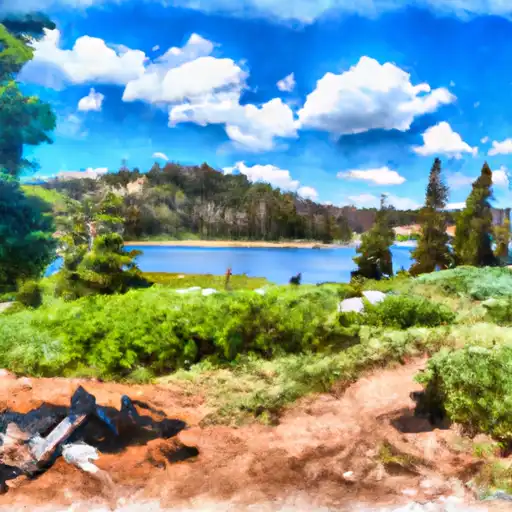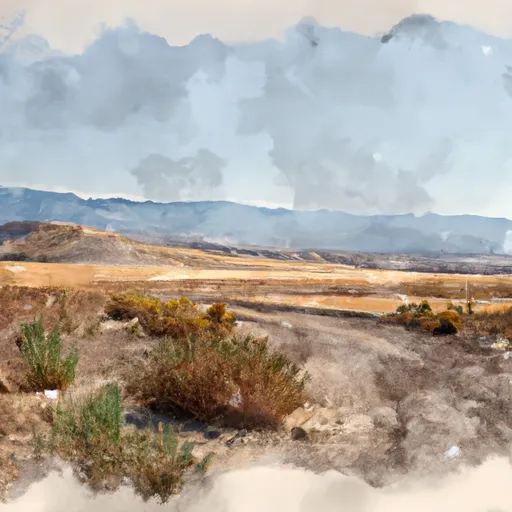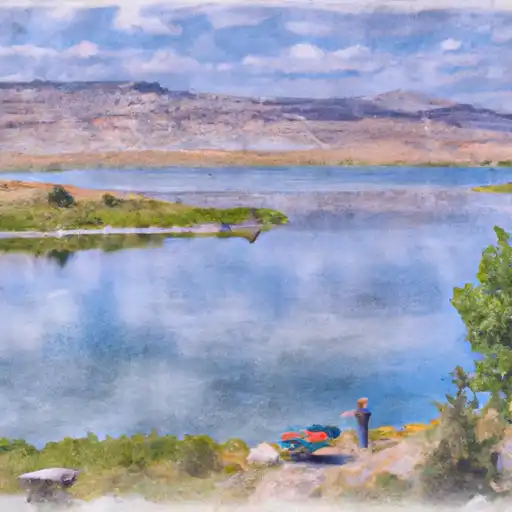State Wildlife Area Bald Mountain
Rate this placeLast Updated: January 2, 2026
Bald Mountain State Wildlife Area, located in the state of Utah, offers visitors a picturesque and diverse natural environment, making it an ideal destination for outdoor enthusiasts and wildlife lovers.
°F
°F
mph
Wind
%
Humidity
Summary
Here is a summary of the area, including reasons to visit, points of interest, interesting facts, and the best time of year to visit:
1. Reasons to Visit:
- Breathtaking Scenery: Bald Mountain State Wildlife Area is renowned for its stunning panoramic views of the surrounding Uinta Mountains and the vast Salt Lake Valley.
- Wildlife Observation: The area provides a habitat for various wildlife species, including mule deer, elk, moose, black bears, mountain lions, and numerous bird species. It offers fantastic opportunities for observing and photographing these animals in their natural habitat.
- Recreation: Visitors can engage in a range of outdoor activities, such as hiking, camping, fishing, wildlife viewing, and scenic drives.
2. Points of Interest:
- Bald Mountain Summit: The summit of Bald Mountain, which stands at an elevation of 11,943 feet, is a popular destination for hikers and offers breathtaking views of the surrounding landscape.
- Trails: The area features an extensive trail system that caters to different skill levels. These trails range from easy nature walks to more challenging hikes that lead to picturesque vistas.
- Lakes and Rivers: Visitors can explore and fish in the several lakes and rivers in the area, including the Mirror Lake, Crystal Lake, and Provo River.
3. Interesting Facts:
- Wildlife Conservation: Bald Mountain State Wildlife Area is managed by the Utah Division of Wildlife Resources, primarily for the purpose of wildlife conservation and management.
- Flora and Fauna: The area boasts a diverse range of vegetation, including aspen groves, coniferous forests, wildflowers, and alpine meadows. This rich flora supports a variety of wildlife species.
- Historical Significance: The region around Bald Mountain played a significant role in the history of Utah, with evidence of early Native American settlements and the mining activities of the late 19th century.
4. Best Time of Year to Visit:
- Summer: The summer months (June to August) offer pleasant weather, with temperatures averaging between 70-80°F (21-27°C). This time allows for optimal hiking, camping, and wildlife viewing experiences.
- Fall: September and October are ideal for witnessing the splendid fall colors as the aspen groves turn vibrant shades of gold and orange.
- Winter: Winter brings snow to the area, making it a great time for snowshoeing, cross-country skiing, and enjoying the serene winter landscapes. However, be prepared for cold temperatures and heavy snowfall.
To ensure accuracy, it is always recommended to verify information across multiple independent sources, such as official state park websites, wildlife organizations, and local tourism authorities.
Weather Forecast
Park & Land Designation Reference
Large protected natural areas managed by the federal government to preserve significant landscapes, ecosystems, and cultural resources; recreation is allowed but conservation is the priority.
State Park
Public natural or recreational areas managed by a state government, typically smaller than national parks and focused on regional natural features, recreation, and education.
Local Park
Community-level parks managed by cities or counties, emphasizing recreation, playgrounds, sports, and green space close to populated areas.
Wilderness Area
The highest level of land protection in the U.S.; designated areas where nature is left essentially untouched, with no roads, structures, or motorized access permitted.
National Recreation Area
Areas set aside primarily for outdoor recreation (boating, hiking, fishing), often around reservoirs, rivers, or scenic landscapes; may allow more development.
National Conservation Area (BLM)
BLM-managed areas with special ecological, cultural, or scientific value; more protection than typical BLM land but less strict than Wilderness Areas.
State Forest
State-managed forests focused on habitat, watershed, recreation, and sustainable timber harvest.
National Forest
Federally managed lands focused on multiple use—recreation, wildlife habitat, watershed protection, and resource extraction (like timber)—unlike the stricter protections of national parks.
Wilderness
A protected area set aside to conserve specific resources—such as wildlife, habitats, or scientific features—with regulations varying widely depending on the managing agency and purpose.
Bureau of Land Management (BLM) Land
Vast federal lands managed for mixed use—recreation, grazing, mining, conservation—with fewer restrictions than national parks or forests.
Related References
Area Campgrounds
| Location | Reservations | Toilets |
|---|---|---|
 Lake Hill Campground
Lake Hill Campground
|
||
 Lake Hill
Lake Hill
|
||
 Manti Community Campground
Manti Community Campground
|
||
 Manti
Manti
|
||
 Seely Creek Guard Station
Seely Creek Guard Station
|
||
 Upper Six Mile Ponds
Upper Six Mile Ponds
|

 Snow College Sports Complex
Snow College Sports Complex
 Mainti Face State Wildlife Area
Mainti Face State Wildlife Area
 Manti City Park
Manti City Park
 White Hills State Wildlife Area
White Hills State Wildlife Area
 Manit Meadows State Wildlife Area
Manit Meadows State Wildlife Area
 Cottonwood Reservoir
Cottonwood Reservoir
 Yearns Reservoir
Yearns Reservoir
 New Canyon Reservoir
New Canyon Reservoir
 Loggers Reservoir
Loggers Reservoir
 Loggers Fork Reservoir
Loggers Fork Reservoir